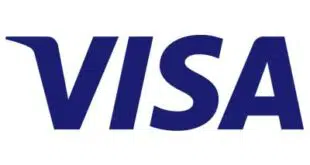Merchants like to gripe about the cost of payment card interchange and processing expenses, but relatively few have done a close analysis of what it really costs to accept the various tender types, according to an Aite Group LLC researcher. If they did, most would conclude that debit cards are the least expensive form of payment and cash is usually the most expensive—by far.
Merchants “have been complaining about the high cost of credit and debit card acceptance,” says Madeline Aufseeser, senior analyst at Boston-based Aite Group. “I say compared to what?”
In a new report dubbed “Tender Truths: The Real Cost of POS Transactions in the U.S.,” Aufseeser presents a financial model that compares the costs of accepting cash, general-purpose credit and debit cards and private-label credit cards after factoring in average ticket sizes, transaction share by payment type, handling expenses, and theft, fraud and chargebacks. To develop a standardized model, which she applies to case studies for specialty retailers, quick-service restaurants and convenience stores, Aufseeser interviewed 40 executives at more than 30 companies from March to May. She did not analyze checks because none of the companies she interviewed accepts checks at the point of sale, mainly because of their slow transaction speed.
Merchants can readily get an idea of their card-acceptance costs by looking at the monthly statements from their acquirers, and they know that cash carries its own costs in the form of theft, handling, reconciliation errors and armored-car expenses. But very few businesses, apart from some of the biggest, have done detailed studies of payment-related expenses, according to Aufseeser. “I think that there are some merchants that have done this type of analysis … but by and large the majority of merchants, including some very large ones, have not,” she says.
If they did, they might be surprised. For example, at QSRs, cash expense is 40% greater than credit cards and 50% greater than debit cards based on the average purchase size for each tender type. Equalized costs per transaction, when compared against the average credit card sale, put debit expense at 25 cents, credit at 27 cents, and cash at 43 cents.
At specialty retailers, the equalized per-transaction payment cost when compared to the average credit card purchase is 75 cents for debit, 77 cents for private-label credit, $2.26 for cash and $3.19 for general-purpose credit.
At convenience stores, where Aite analyzed both fuel-pump and in-store purchases, the equalized cost per transaction, again compared against the average credit sale, is 48 cents for debit, 67 cents for credit and $1.46 for cash. One factor in cash’s high cost is the c-store industry’s susceptibility to theft.
A major reason for debit’s relative low expense is not only its lower interchange rates compared to credit cards’, but also the price cap (21 cents plus 0.5% of the sale and 1 cent for fraud control) imposed by the 2010 Dodd-Frank Act’s Durbin Amendment, which applies to debit issuers with more than $10 billion in assets. The comparative handful of financial institutions subject to the cap issue about two-thirds of the nation’s debit cards.
“Debit is cheap right now, very cheap, thanks to Durbin,” says Aufseeser.
That’s not always the case, however. Small-ticket merchants have complained that because of Durbin, their debit card acceptance costs actually have risen. “The evidence does bear out if you’re looking at a micro-ticket [transaction], 21 cents is looking pretty pricey,” Aufseeser says. “But the vast majority are not in that space.”
Aufseeser says her model creates benchmarks against which to compare acceptance costs, but she adds that every merchant’s payment expenses will vary based on its particular transaction volumes, average ticket size and mix of tenders. Most often, debit costs the least, with private-label credit an inexpensive option for those merchants that offer it. But no blanket statement about payment expenses can be applied to entire industries, she notes. “The generality that can be made is that every merchant segment is going to be different,” she says.





